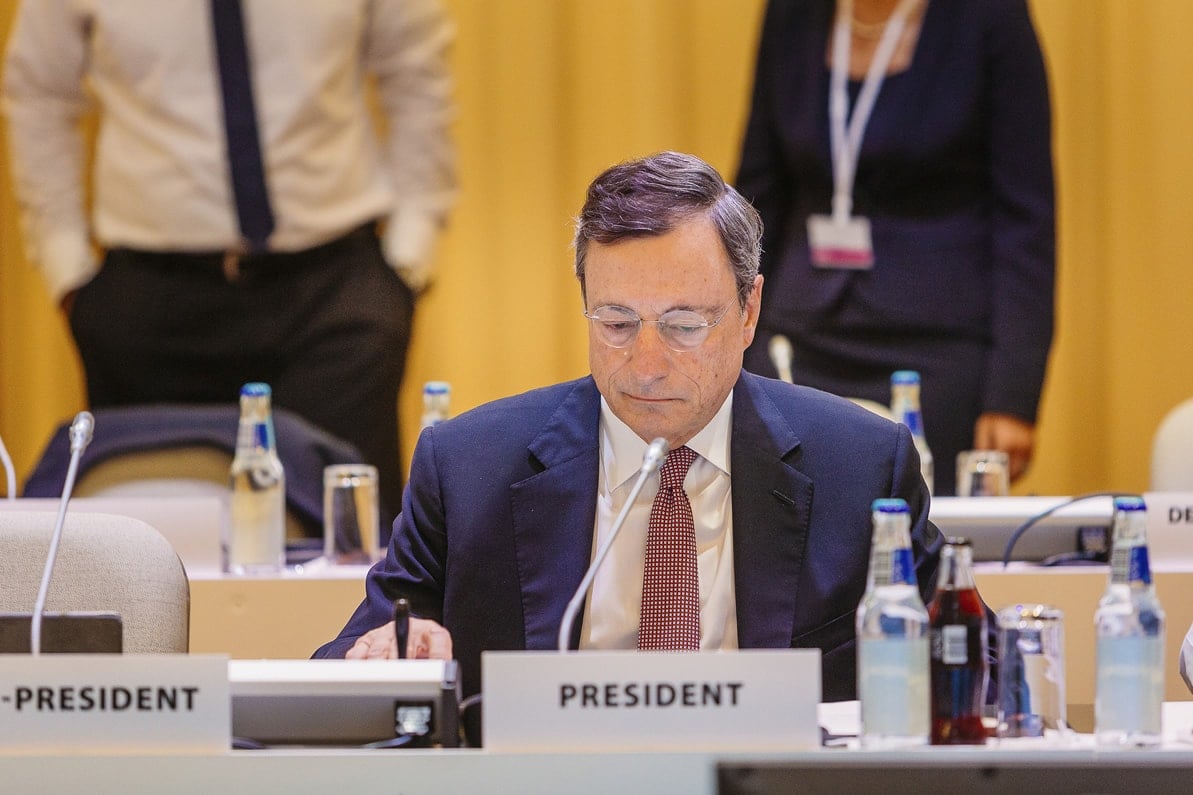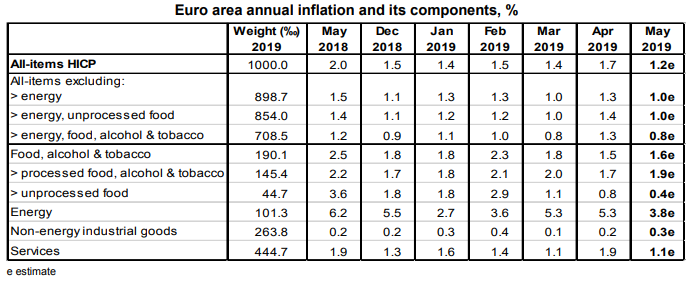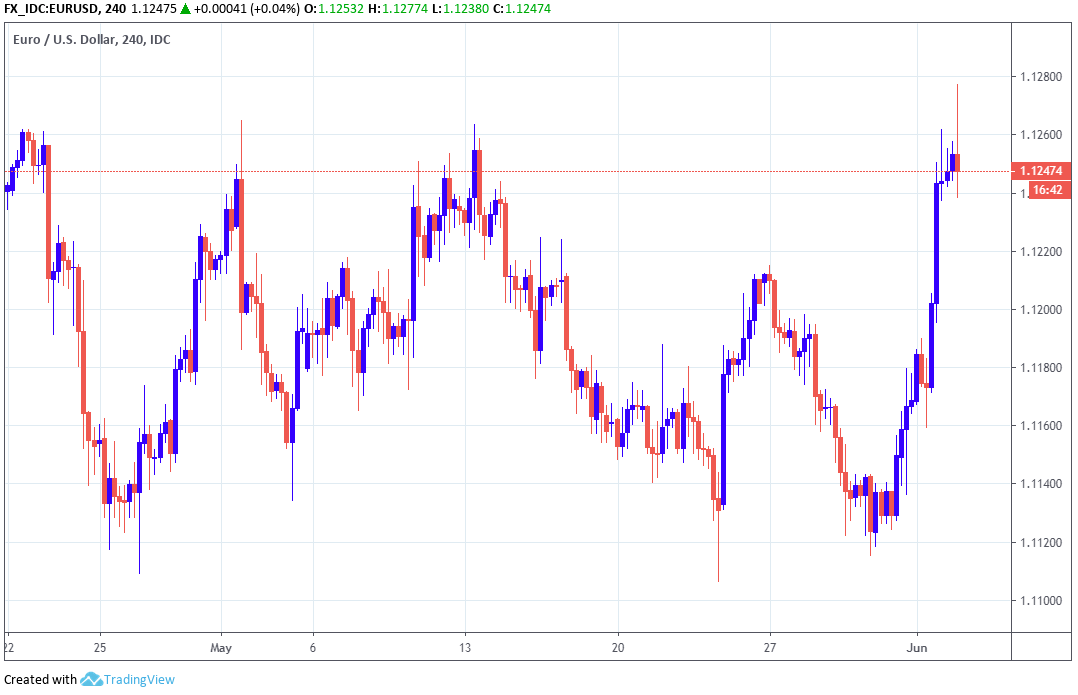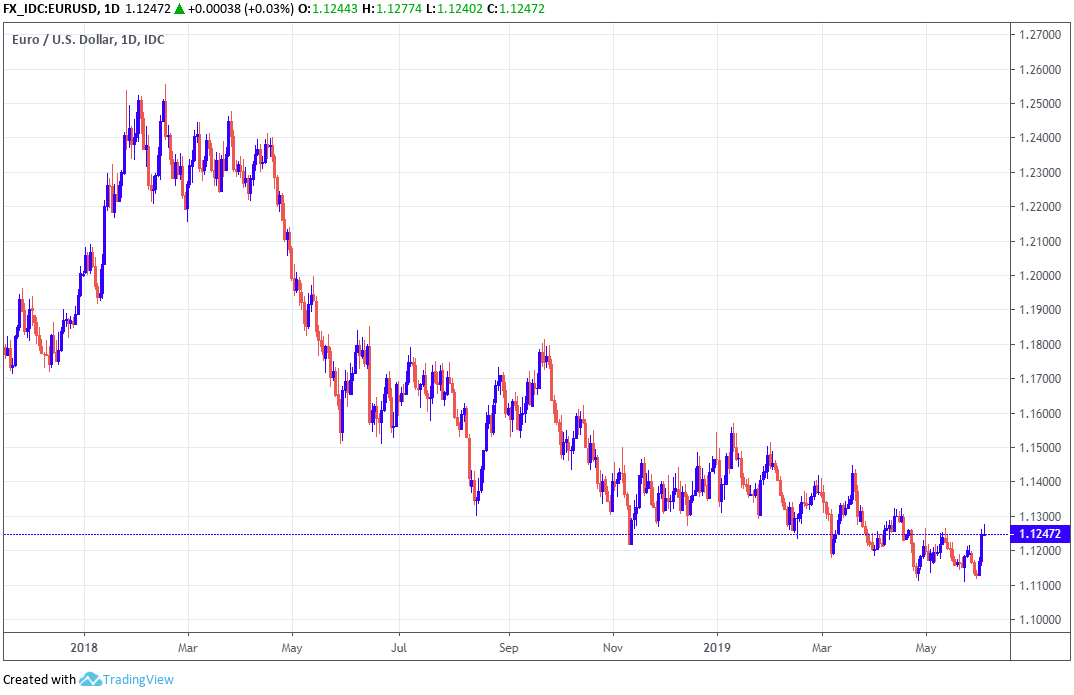The Euro-Dollar Rate Treads Water after May Inflation Data Asks Awkward Question of ECB this Week
- Written by: James Skinner

© European Central Bank
- EUR steady but inflation data poses awkward question for the ECB.
- CPI more than unwinds Easter bump ahead of Thursday's ECB meet.
- UBS says market inflation expectations hit lowest since early 2016.
- EUR supported by Fed rate cut talk, but analyst doubt it'll last long.
The Euro was stable against a weak Dollar on Tuesday even after inflation date for the month of May surprised sharply on the downside, potentially posing an awkward question to the European Central Bank (ECB) on Thursday, although the single currency is currently focused on events across the Atlantic.
Eurozone inflation fell to 1.2% in May, from 1.7% previously, Eurostat said Wednesday. This is below the market consensus for a reading of 1.4% and more than unwinds the 30 basis point increase seen in the previous month.
Core inflation, which ignores commoditised food and energy items so is thought to provide a better reflection of domestically generated price pressures, fell from 1.3% to 0.8% in May.
The more important core rate is now at its lowest level since April 2018, which could be problematic for the European Central Bank, although some economists say Tuesday's declines are again mostly the result of Easter-related distortions.
"The core rate fell from 1.3% to 0.8%, which was slightly weaker than the consensus forecast of 0.9%, and was due to a decline in services inflation, which we suspect was mostly driven by a fall in the prices of seasonal items such as package holidays and airfares given that the timing of Easter temporarily boosted the prices of these items in April this year," says Christina Iacovides at Capital Economics.

Above: Contributions to Eurozone inflation in May. Source: Eurostat.
Markets care about inflation data because it determines ECB interest rate policy, which is the primary tool policymakers use to control price pressures. Lower rates are used to stimulate economic growth and inflation pressures. However, lower rates also tend to see investors driven out of and deterred away from a currency because capital flows move in the direction of the most advantageous or improving returns.
Eurozone inflation has been stuck below the ECB’s 2% target ever since November 2018 when oil prices began reversing earlier gains. If not for volatility in oil prices, the headline rate might not have seen the target level for a number of years. And core inflation, which is seen as the truer measure of price pressures, has not been above 1.3% at all in the four years since the European Central Bank began its now-shuttered quantitative easing programme.
"The recent volatility in inflation is largely due to calendar effects related to the timing of Easter, and gives few pointers about the trend of underlying inflation. However, market-based inflation expectations (5Y5Y inflation forwards) dropped to 1.3% in May, levels not seen since September 2016, when the oil price was below $50/bbl. This is likely to be a major concern for the ECB," says Reinhard Cluse, an economist at UBS, in a note to clients.

Above: Euro-to-Dollar rate shown at four-hour intervals.
The European Central Bank will announce its latest interest rate and monetary policy decisions at 12:45 on Thursday. ECB President Mario Draghi is expected to set out in a subsequent press conference the details of the latest 'targeted-long-term-refinancing-operation', which will provide cheap cash to Eurozone commercial banks in order to encourage them to lend more to companies and consumers.
Draghi and the governing council have left the refinancing rate, marginal lending rate and deposit rate unchanged at 0%, 0.25% and -0.4% for a number of years now, which are some of the lowest interest rates in the developed world. Financial markets have now given up hope of seeing them lifted until well into the 2020 year, which partly explains the Euro's losses and underperformance since the middle of 2018.
"As uncertainty continues, businesses tend to take increased costs into their margins, delaying the recovery of core inflation that the higher wage growth would warrant. This should keep a lid on EUR/USD upside though the key driver for the cross today will be Fed’s Powell remarks this afternoon," says Petr Krpata, a strategist at ING.

Above: Euro-to-Dollar rate shown at daily intervals.
The Euro was quoted 0.03% lower at 1.1243 against a weak Dollar Tuesday and is now down 1.9% for 2019, while the Euro-to-Pound rate was 0.01% lower at 0.8879 and has fallen 1.2% this year.
"Market expectations of Fed rate cuts have risen further following the Fed’s Bullard comments about the need to ease policy in light of the slowing growth and the risk of escalating trade wars. While the USD weakened in response, we note [that] plenty is already priced in (64bp of cuts for this year, and 35bp for 2020 – a frontloaded easing cycle). This makes it more challenging for the Fed to surprise on the dovish side in terms of the 2019 outlook," Krpata writes, in a note to ING clients.
Financial markets are now betting on two full Federal Reserve interest rate cuts being delivered in 2019, when as recently as last Monday market pricing had suggested that investors were still uncertain about the idea of a second cut.
Until this week 'safe-haven' flows connected to the U.S.-China 'trade war' had kept the greenback supported but comments made overnight by Federal-Open-Market-Commitee voting member James Bullard saw the currency market begin to give airtime to the seemingly evolving outlook for Federal Reserve rate policy.
Bullard said in a Monday speech to the Union League Club of Chicago that a Federal Reserve rate cut could be needed before the year is out, sending the Dollar lower against most of its G10 rivals overnight. But some analysts are unconvinced that this weakness will last.
"The bond bulls are firmly in charge and even the euro is up a bit. But while we're yen bulls, and really don't want to miss the dollar turn, it's too early for that," says Kit Juckes, chief FX strategist at Societe Generale, in a morning note to clients. "For now, I think it's too early for the euro to stage a meaningful move higher and I'd much rather be short USD/JPY than long EUR/USD. Short EUR/JPY still works."
Time to move your money? Get 3-5% more currency than your bank would offer by using the services of foreign exchange specialists at RationalFX. A specialist broker can deliver you an exchange rate closer to the real market rate, thereby saving you substantial quantities of currency. Find out more here.
* Advertisement




